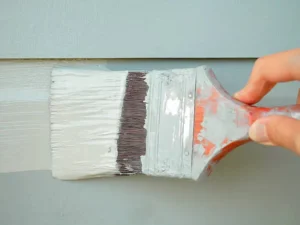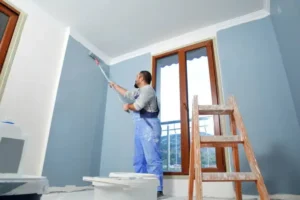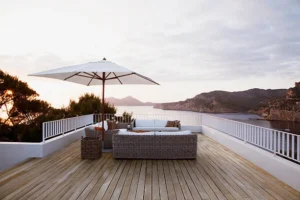Have you ever stood in front of a wall of paint swatches feeling completely lost? I know I have. Choosing colors for your home can feel like trying to solve a puzzle with a thousand pieces. Whether you’re freshening up your living room or giving your home’s exterior a complete makeover, interior and exterior painting color selection can make or break your project.
At Interbay Construction, we’ve guided countless homeowners through this colorful journey, and today I’m sharing our best insights to help you navigate your painting project with confidence.
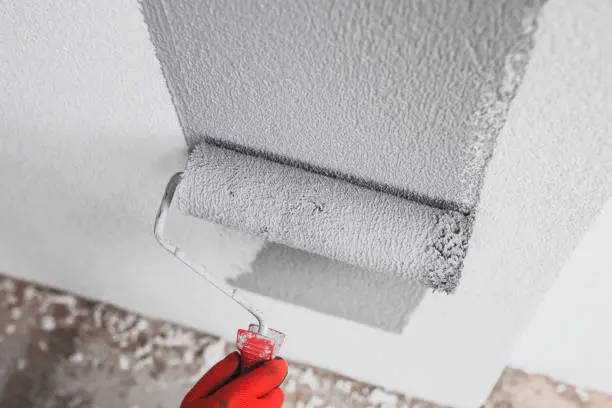
Understanding the Key Differences Between Interior and Exterior Paint
Before diving into color selection, let’s talk about why you can’t just use the same paint everywhere (a mistake I’ve seen too many times).
Interior and exterior paints are formulated differently for good reason. Think of exterior paint as the tough older sibling – it needs to withstand harsh weather, temperature changes, and fading from UV rays. Interior and exterior painting choices matter because interior paint, on the other hand, is all about looks and cleanability.
Here’s what sets them apart:
Interior Paint:
- Formulated to resist staining and allow for easier cleaning
- Lower VOCs (volatile organic compounds) for better indoor air quality
- Designed to stand up to scuffs and bumps from daily living
- Often available in a wider range of finishes (flat, eggshell, satin, semi-gloss, high-gloss)
Exterior Paint:
- Contains additives to resist mildew, fading, and peeling
- Flexible formulation that can expand and contract with temperature changes
- More resistant to water damage
- Usually available in fewer finish options (mainly flat, satin, and gloss)
Using the wrong type of paint can lead to disappointing results and costly do-overs. Interior paint used outside will crack and peel quickly, while exterior paint used inside might emit too many chemicals for comfortable living.
Choosing Colors for Interior Spaces: Room by Room Guide
When it comes to interior painting, each room tells its own story. The colors you choose can dramatically affect how you feel in these spaces.
Living Rooms: Creating Your Home’s Heart
Your living room is where life happens – family gatherings, movie nights, quiet reading time. The color should reflect the mood you want to create.
For larger living rooms, consider:
- Warm neutrals like beige or greige for a timeless look
- Soft blues or greens for a calming atmosphere
- Deeper colors like navy or forest green for a cozy, intimate feel on accent walls
Pro tip: Natural light matters. North-facing rooms get cooler light, so warmer tones can balance that out. South-facing rooms already get warm, golden light, giving you more flexibility.
Kitchens: The Busy Hub
Kitchens interiors see a lot of action and are often places of high energy. When I’ve helped clients with kitchen color selection, I always consider:
- White or off-white for a clean, fresh look that makes the space feel larger
- Soft yellows or warm neutrals to create a welcoming atmosphere
- Bold accent colors for kitchen islands or lower cabinets
Remember that kitchens need more durable, washable paint finishes. Semi-gloss or satin works best for walls that might need frequent wiping.
Bedrooms: Your Personal Retreat
For bedrooms, think restful and personal. What colors help you unwind?
- Blues and greens promote relaxation and better sleep
- Soft lavenders or pale purples add a touch of luxury while keeping the vibe calm
- Neutral tones provide versatility for changing decor
Children’s bedrooms allow for more playfulness, but consider colors that can grow with them rather than trendy themes they might outgrow quickly.
Bathrooms: Small Spaces, Big Impact
Bathrooms present unique challenges with their high moisture levels and often limited space.
- Light colors (soft blues, greens, or neutrals) make small bathrooms feel larger
- Whites and off-whites create a clean, spa-like atmosphere
- Darker colors can add drama in powder rooms or larger bathrooms with good lighting
Always use moisture-resistant paint formulated for bathroom interiors to prevent mildew and peeling.
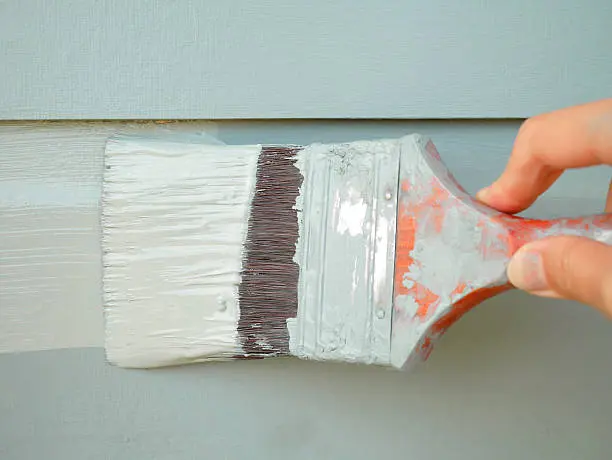
Exterior Paint Colors: Making a Lasting Impression
Your home’s exterior is its handshake with the world. The colors you choose need to work with your architecture, neighborhood context, and personal style.
Consider These Factors When Selecting Exterior Colors:
1. Architectural Style Different home styles have traditional color palettes that complement their features:
- Craftsman homes look beautiful with earth tones and natural colors
- Colonial homes often feature classic whites with bold accents on shutters and doors
- Modern homes can handle more dramatic color contrasts or monochromatic schemes
2. Fixed Elements Work with what you can’t change:
- Roof color
- Stone or brick elements
- Hardscaping materials
3. Neighborhood Context While you want your home to stand out in a good way, it should still harmonize with surrounding homes. Take a drive around your neighborhood for inspiration and to avoid choosing colors too similar to your next-door neighbor.
4. Climate Considerations In hot, sunny climates, lighter colors reflect heat and can help with energy efficiency. In cooler areas, darker colors might help absorb warmth.
Creating a Cohesive Exterior Color Scheme
For a balanced exterior, think in terms of three main components:
- Main body color: The primary color covering most of your home’s exterior
- Trim color: For window frames, fascia boards, corner boards (usually lighter than the body color)
- Accent color: For doors, shutters, and architectural details (this is where you can go bolder)
A good rule of thumb: If your main color is dark, go lighter with trim. If your main color is light, you have more flexibility with trim colors.
Color Psychology: How Different Hues Affect Mood
Colors aren’t just pretty – they influence how we feel. Understanding color psychology can help you create spaces that feel the way you want them to.
- Blues: Calming, serene, promote focus and relaxation
- Greens: Refreshing, natural, reduce stress
- Yellows: Energetic, cheerful, stimulate conversation
- Reds: Passionate, exciting, can increase appetite (think about this for dining rooms!)
- Neutrals: Versatile, timeless, create good backgrounds for other design elements
Testing Colors Before Committing
I always tell clients: never skip the test patch! Colors look different on your walls than they do on tiny swatches.
For interiors:
- Paint a 2×2 foot square on each wall you plan to paint
- Look at it during different times of day to see how lighting changes the color
- Live with it for at least 48 hours before deciding
For exteriors:
- Paint test patches in sun and shade areas
- View the colors at different times of day
- Step back to the curb to see how the colors look from a distance
Working with Color Schemes: Creating Harmony
Creating cohesive color schemes doesn’t require an art degree. Here are some approaches that work well:
Monochromatic: Different shades of the same color create a sophisticated, harmonious look.
Complementary: Colors opposite each other on the color wheel (like blue and orange) create energy and contrast.
Analogous: Colors next to each other on the color wheel (like blue, blue-green, and green) flow naturally together.
For whole-home color schemes, consider creating a “color story” that flows from room to room. Colors don’t have to match perfectly, but they should communicate with each other for a unified feel.
Trending Colors vs. Timeless Choices
While it’s fun to stay current with color trends, remember that painting is an investment. Consider how long you’ll be happy living with your color choices.
Current color trends include:
- Earthy, natural tones
- Soft, muted pastels
- Rich, moody blues and greens
- Warm neutrals replacing cool grays
For a balance of trendy and timeless:
- Use more current colors in spaces that are easier to repaint (like powder rooms)
- Stick with classics for larger spaces and exteriors
- Add trendy colors through accessories that are easier to swap out
Professional Interior and Exterior Painting Services: When to Call in the Experts
While DIY painting can be rewarding, there are times when professional painters are worth the investment:
- When dealing with very high walls or ceilings
- For exterior painting that requires special equipment
- When preparation requires repairs or specialized knowledge
- For custom finishes that require expertise
- When you simply don’t have the time or physical ability
Professional painters bring expertise in:
- Surface preparation (often the most important part of the job)
- Color consulting and visualization
- Proper application techniques
- Dealing with challenging surfaces or conditions
- Using the right products for each situation
Maintaining Your Painted Surfaces
Once you’ve achieved the perfect colors, proper maintenance will keep them looking fresh:
For interior painted surfaces:
- Clean walls gently with appropriate cleaners for the finish
- Touch up high-traffic areas as needed
- Address any moisture issues promptly to prevent damage
For exterior painted surfaces:
- Inspect regularly for peeling, cracking, or mildew
- Clean exterior surfaces yearly with gentle pressure washing
- Plan for repainting exteriors every 7-10 years (depending on your climate and paint quality)
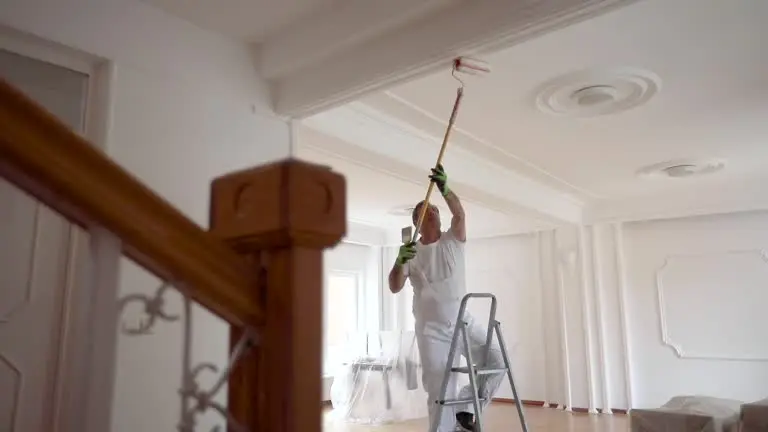
In conclusion, choosing the right colors for your home’s interior and exterior surfaces is both an art and a science. By understanding the differences between paint types, considering the function of each space, testing thoroughly, and planning a cohesive interior and exterior painting color story, you can create a home that feels uniquely yours.
Whether you’re planning a DIY project or looking for professional interior painting services or exterior painting services, taking time to think through your color choices will pay off with results you’ll love for years to come.
Ready to transform your home with fresh color? Contact us today at Interbay Construction for a consultation. Our team can help you navigate color selection and provide expert application for results that will make you smile every time you pull into your driveway or walk through your door.
Frequently Asked Questions
1. Why is color selection important in interior and exterior painting?
Color selection in painting is essential because it shapes mood, enhances curb appeal, and impacts durability. Choosing the right shades helps create cohesive, beautiful spaces inside and out, ensuring your home reflects your style while withstanding environmental factors like sunlight, moisture, and temperature changes.
2. How does interior and exterior painting affect home value?
Painting can significantly increase home value by boosting visual appeal and protecting surfaces. Fresh, well-chosen colors enhance first impressions, making your property more attractive to buyers. Regularly maintained interior and exterior painting also extends the life of walls and siding, saving on future repair costs.
3. What are common mistakes in interior and exterior painting projects?
A major mistake in painting is using the wrong paint type for the surface, leading to peeling or fading. Other mistakes include skipping surface preparation, ignoring lighting effects, or choosing colors without testing. Careful planning avoids costly do-overs in interior and exterior painting projects.
4. Can I DIY interior and exterior painting, or should I hire professionals?
DIY painting works well for small or accessible spaces if you have time and tools. However, professional painters are recommended for multi-story exteriors, tricky repairs, or when seeking a flawless finish. They bring expertise, ensuring your interior and exterior painting project lasts and looks great.
5. How often should interior and exterior painting be redone?
Painting timelines vary: interior walls may need repainting every 5–7 years, while exteriors often require fresh coats every 7–10 years, depending on climate and paint quality. Regular inspections help determine when touch-ups or full repainting are necessary to maintain your home’s fresh, polished appearance.
6. What finish options are available in interior and exterior painting?
Painting finishes differ based on needs. Interiors offer a range from matte to high-gloss for style and cleanability. Exterior finishes, usually flat, satin, or gloss, focus on durability and weather resistance. Selecting the right finish ensures your interior and exterior painting results are both practical and beautiful.
7. Why is testing color samples crucial in interior and exterior painting?
Testing samples is vital in painting because lighting, surface texture, and surroundings affect how colors appear. Painting small test areas lets you see real-world results before committing, ensuring your interior and exterior painting project achieves the exact look and atmosphere you envision.


